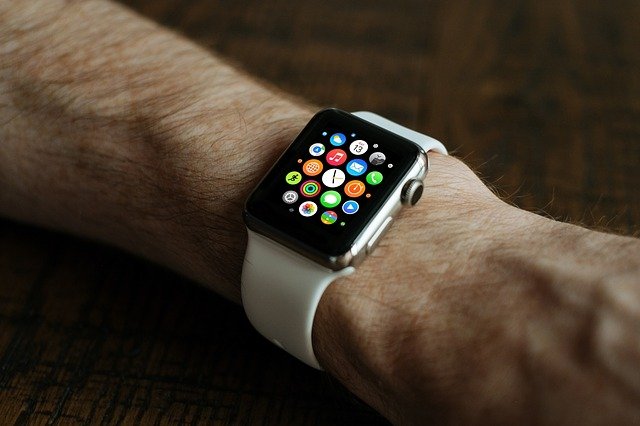Wearable technology
[edit] Introduction
Wearable technology is an article of clothing or a device that can be worn (or possibly carried as an implant) in order to transmit certain types of information. Sometimes referred to as wearables, these devices are generally used for health-related purposes.
Examples include smart watches (which can record various metrics of the wearer’s health and behaviour), smart glasses (which can provide visual imagery), smart clothing (which can provide heating, enhanced visibility or greater sensitivity), smart hearing aids and even smart jewellery (which can, for example, issue alerts to the wearer).
[edit] Wearables in construction and the built environment
Wearables can have a degree of 'intelligence' built in and can generally communicate with other devices directly or indirectly.
For construction purposes, wearable technology can be used in conjunction with navigation systems to assist with management of people, tools, equipment and so on. Animals are also able to wear devices or carry implants that can, in some cases, be relevant to the built environment. For example, a guide dog can be fitted with a wearable device to help assist its companion in and around the workplace.
Wearables can also be used in personnel distancing systems (known as PDS) which are proximity warning devices that can be fastened to an arm, belt, hard hat lanyards or wrist band. Once an exclusion zone has been programmed, these tags will sound an alarm and vibrate if the wearer gets too close to another wearer, dangerous plant, lorries and so on.
This form of wearable technology may be useful in warehouses and shops, allowing staff in a highly mobile environment to focus on their jobs and let the PDS alert them if distancing measures are being breached.
There is substantial potential for the deployment of wearables, but there are also significant technical, social and legal challenges.
[edit] Related articles on Designing Buildings Wiki
- Advanced construction technology.
- ConTech.
- ConTech in a post lockdown, pre-vaccine economy.
- Immersive Hybrid Reality iHR.
- Shaping the Future of Construction: Inspiring innovators redefine the industry.
- Smart sensor market.
- Trends towards wearables and wellbeing in buildings.
- Ubiquitous sensors to assess energy consumption and wellbeing in domestic environments.
- Wearables and wellbeing in buildings.
Featured articles and news
Gregor Harvie argues that AI is state-sanctioned theft of IP.
Experimental AI housing target help for councils
Experimental AI could help councils meet housing targets by digitising records.
New-style degrees set for reformed ARB accreditation
Following the ARB Tomorrow's Architects competency outcomes for Architects.
BSRIA Occupant Wellbeing survey BOW
Occupant satisfaction and wellbeing tool inc. physical environment, indoor facilities, functionality and accessibility.
Preserving, waterproofing and decorating buildings.
Many resources for visitors aswell as new features for members.
Using technology to empower communities
The Community data platform; capturing the DNA of a place and fostering participation, for better design.
Heat pump and wind turbine sound calculations for PDRs
MCS publish updated sound calculation standards for permitted development installations.
Homes England creates largest housing-led site in the North
Successful, 34 hectare land acquisition with the residential allocation now completed.
Scottish apprenticeship training proposals
General support although better accountability and transparency is sought.
The history of building regulations
A story of belated action in response to crisis.
Moisture, fire safety and emerging trends in living walls
How wet is your wall?
Current policy explained and newly published consultation by the UK and Welsh Governments.
British architecture 1919–39. Book review.
Conservation of listed prefabs in Moseley.
Energy industry calls for urgent reform.
Heritage staff wellbeing at work survey.
























